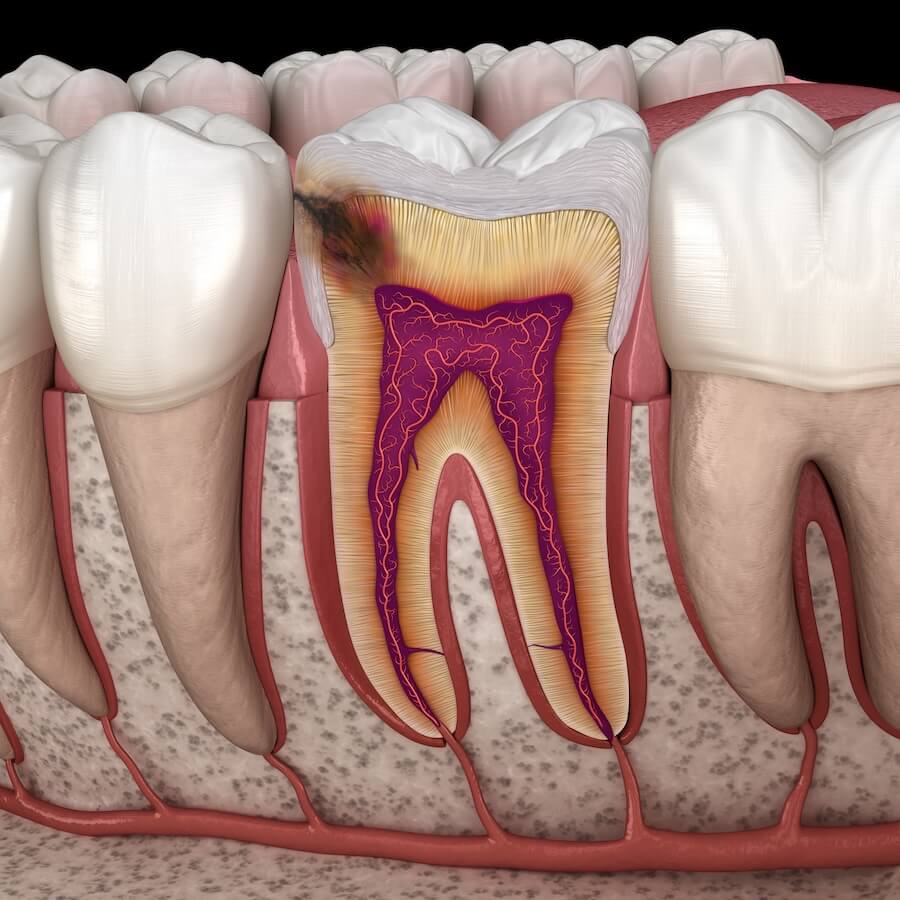How to Tell if You Have a Cavity

There's nothing quite like the jolt of cold water hitting a sensitive tooth. It can be subtle or sudden, and often, it's easy to dismiss. But that little zing could be your smile's way of waving a red flag. Cavities aren't always obvious. They don't always start with pain. So, how can you tell if something is brewing beneath the surface? Let's take a walk through the signs—because spotting a cavity early can make all the difference.
1. Tooth Sensitivity That Sticks Around
One of the earliest red flags is increased sensitivity to hot, cold, or sweet foods. If you notice a lingering zing when sipping coffee or eating ice cream, it could be your enamel thinning in one area. You might also feel a sudden twinge when biting down—this often happens when decay reaches the softer layer beneath the enamel. It's easy to brush these off at first, but consistent sensitivity in the same spot deserves attention.
2. A Dull Ache That Comes and Goes
Toothaches don't always announce themselves loudly. Sometimes they start as a dull ache that flares up randomly—maybe when you bite down, maybe when you're doing nothing at all. This is your tooth's way of telling you something isn't right.
While there are many reasons for tooth pain, including grinding or gum issues, a cavity is a very common one. And unlike a sore muscle, this discomfort won't heal on its own.
3. Dark Spots or Visible Holes
Ever look in the mirror and notice a little dark spot on a tooth that wasn't there before? Or maybe you feel a small dip or pit when you run your tongue over your teeth?
Cavities start small. In their early stages, they might look like faint white marks. As they progress, they darken and can develop into visible holes. If you can see it or feel it, it's worth getting it checked.
4. Bad Breath That Just Won't Quit
Morning breath is one thing. Persistent bad breath or a weird taste in your mouth that hangs around, even after brushing and rinsing, could mean bacteria are thriving in a cavity.
Cavities create the perfect hideout for food particles and bacteria. Over time, this leads to decay and odor. If mints and mouthwash are no match, it might be time for a deeper look.
5. Food Getting Stuck More Often
Notice food keeps getting trapped in the same spot between your teeth? It could be a sign that the structure of the tooth has changed.
As cavities form, they can alter the natural shape and spacing of your teeth, creating little pockets that catch food. This isn't just annoying—it's also a red flag that decay may be developing or progressing.
6. Your Filling Feels "Off"
Already had a cavity filled? If that area starts feeling weird—like the filling is loose, cracked, or the tooth feels different—it could mean the cavity has returned or the filling needs replacing. Fillings aren't forever. They wear down, just like the teeth around them.
Why You Shouldn't Wait
It's tempting to ignore minor discomfort, especially if it comes and goes. But here's the thing: cavities won't resolve themselves. And catching them early means smaller fillings, less drilling, less time, lower costs, and a lot less stress.
Cavities that go untreated can lead to infections, abscesses, or even tooth loss. At that point, treatment becomes more complicated—and more time-consuming.
Don't Panic—Cavities Are Treatable
If you're worried that you might have a cavity, don't stress. The good news is that when caught early, treatment is quick and straightforward. Fillings today are tooth-colored, smooth, and can usually be done in a single visit. No silver smile, no fuss.
And if it's been a while since your last checkup, that's okay. Dentists like Dr. Sonal Desai are here to help—not judge. Life gets busy, and teeth can fall off the radar. What matters is taking the next step.
Cavity Prevention Made Simple
Preventing cavities isn't complicated—it just takes a few consistent habits and a little help from your dental team.
- Sealants: These protective coatings are especially useful on hard-to-clean molars, helping block decay before it starts.
- Regular Checkups: Twice-yearly visits allow for early detection, professional cleanings, and personalized guidance.
- Effective Brushing & Flossing: Brushing twice a day with fluoride toothpaste strengthens enamel and removes daily plaque buildup. Daily flossing clears out debris and bacteria from between teeth—areas your toothbrush can't reach.
- Smart Dietary Habits: Reducing sugary snacks and acidic drinks, and drinking more water, helps keep oral bacteria in check.
A few small adjustments can go a long way toward keeping your smile healthy—and avoiding future dental work.
Expert Cavity Treatment at North Richland Hills Cosmetic & Implant Dentistry
At North Richland Hills Cosmetic & Implant Dentistry, Dr. Sonal Desai helps patients catch cavities before they cause major headaches. Noticing a weird taste, some sensitivity, or a spot that just doesn't feel right? Come in and let's take a look.
